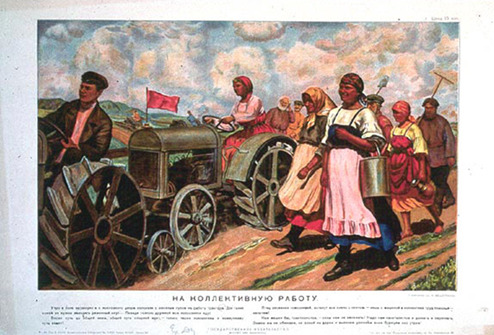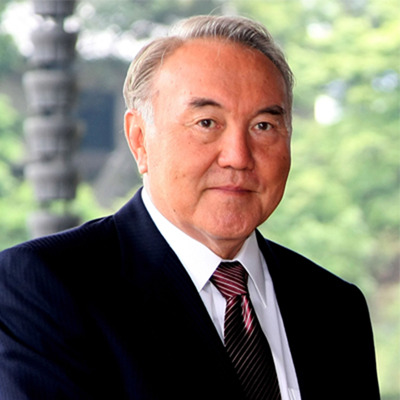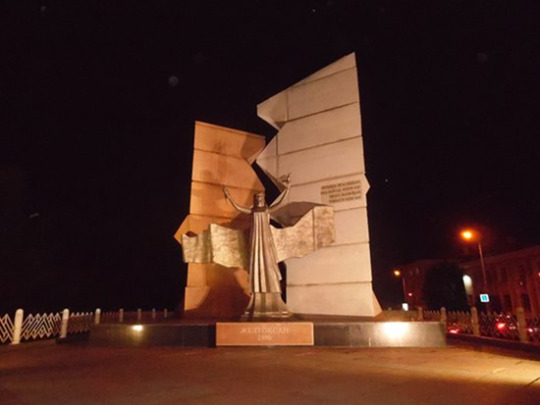#zheltoksan
Text
priv- um mackenzie gone in the beginning of oct or the end of september, and home perm i thin nov 25 or December 25 i didn't tell myself
priv- um mackenzie kazannin basynda nemese kyrkuyektin ayagynda ketty, al uy permyi i ziniske Nov 25 nemese 25 zheltoksan maine ozime aitpadym
0 notes
Text
The Zheltoksan uprising: Kazakhs’ attempt to make their voices heard despite the Soviet leadership being unprepared to listen

The spark of the demonstrations of 17th-18th December 1986 was the bureaucratic reshuffle - the replacement of leadership of the Kazakh Soviet Socialist Republic (one of the fifteen ostensibly autonomous republics of which the USSR consisted of). Said change seemed like a straightforward one as it would replace one Soviet apparatchik with another, which had been a part of Mikhail Gorbachev’s attempt to drive out entrenched local leaders. The problem stemmed deeper than the replacement of the leader itself.
Dinmukhamed Kunayev had been the country’s communist leader for over two decades and was about to be replaced by Gennadiy Kolbin, a former regional party boss in Soviet Russia. It reinforced the feeling that the Soviets’ view of Kazakhs was as second-class citizens, unfit to rule the country themselves. This is confirmed by Dos Kushim, a lecturer at the time, who describes the situations as such: “for years this discontent had been accumulating inside us, that we’d become second-rate. The affront had been building up in our souls”.
By the 1980s, parts of Kazakhstan had been under Russian colonial rule for 250 years, which in turn brought a flood of settlers. According to Kazakh historians, in the short period of time between 1907 and 1912, 2.4 million people had arrived from Russia. By 1917, the time of the Russian Revolution, 45 million hectares of the best agricultural land had been granted to Slavic settlers. The growing resentment resulted in a violent outbreak in which Central Asian Muslims attacked settlers during a rebellion against a tsarist conscription order during WWI.
The 1930s and 1940s had an extremely negative impact across the Soviet Union as they were years of famine, Terror and war. The effects were felt by the Kazakhs the most. Within the space of a decade, they became a minority in a land that they had populated for centuries.

In the early 1930s, the famine began, and Stalin made an order of collectivisation of agriculture. Ukraine and Russia were the so called ‘breadbasket of the USSR’ which is where grain was requisitioned from; in Kazakhstan meat was requisitioned.
As Stalin scrapped the result of the 1937 census, it is unknown how many people died in the famine, from hunger and disease, during those years in Kazakhstan.
Moscow takes no responsibility for the communist- era atrocities, so for fear of antagonizing Moscow, Kazakhstan avoids blaming them. Instead they regard the famine as a collective strategy and remain a Russian ally. However, historians do believe that one of the aims of the famine was to wipe out the Kazakhs’ nomadic way of life and integrate them into the Soviet mainstream.
The shift in Kazakhstan’s demographics was deepened following mass deportation of people whose loyalty to Moscow was doubted. Large groups of people were sent to Siberia and Central Asia.
Siberia and Kazakhstan were where Moscow would relocate kulaks, a ‘richer’ class of peasants, as punishment for supposedly hoarding grain and therefore sabotaging collectivasation of agriculture.
In the mid-1950s, Nikita Khrushchev (Stalin’s successor) adopted an agricultural program, which aimed to plant grain in Kazakhstan. This in turn drew another 1.7 million Slavic settlers.
By 1939, Kazakhs formed 38% of the population- the decade before it had been 60%-, Russians and other Slavs made up 50%. By the time of the Zheltoksan protests, Kazakhstan was the only soviet republic in which the people after which it is named, are a minority.
Kazakh poet, Mukhtar Shakhanov was one of the many who feared the Kazakh language faced extinction. He remembers being told to speak a ‘comprehensible tongue’ while in public. Other protestors recall being berated on the streets for speaking a ‘monkey language’. To help build social cohesiveness, the soviet government would recite a mantra: ‘druzhba narodov’ meaning national friendship or ‘friendship of the peoples’.
By the mid-1980s the sense of alienation among Kazakhs increased the tensions. The news of Kunayev being replaces with Gennadiy Kolbin, a Russian, were spreading. A protestor- Gulbakhram Zhunis- explained that the Kazakhs were angered due to the fact that “he didn’t even know what kind of nation this was, our traditions and culture” the appointment of a person who unfamiliarised with the country, just further proved to the people that the soviets didn’t view them as fit to rule.
The replacement was a part of a broader reform adopted by Gorbachev (General-Secretary of the Communist Party of the USSR sin 1985). He launched his policies of perestroika- restructuring the economy- and glasnost – openness to new ideas and discussion. These policies opened up years of building up of resentments all across the UUSR, but most visibly in Kazakhstan.
Younger people thought that now is the time to make their voices be heard as Gorbachev seemed to soften the policies. This unusual sight of demonstrations and open criticism of the regime spread fear among the Soviet leadership, especially as demonstrations seemed to be spreading to other Kazakh towns. Having a traditional reaction, Moscow sent nearly 8 thousand armed police and paramilitary forces into Kazakhstan to disperse of the protestors. People were hurt as Brezhnev square where beatings took place. Two women died from interrogation facilities: ruled as suicides in the official reports. Of the 8500 people interrogated over the protests, 900 were convicted of crimes, including murder, and 82 were jailed. Mukhtar Shakhanov says hundreds of young people’s lives were “ruined forever”.
The Communist leadership engaged in a cover-up, including damage control. Although everyone knew there were casualties, this meant no one knew exactly how many. In 1987, Moscow based western journalist were invited to Kazakhstan and were told the official toll: 2 deaths and 200 injuries.

In 1989, Gorbachev appointed Nazarbayev (pictured above) to replace Kolbin as Kazakhstan’s leader. Two years later, Nazarbayev was elected the first president of an independent Kazakhstan, following the collapse of the UUSR in 1991. In the aftermath of the Zheltoksan protests, he criticized them, calling the protestors ‘hooligans’, but after the independence he presented himself as supporter who played an active role in the protests. Protestors recall him going into the crowds telling people to disperse. He became very ambiguous because of this.
In 1889, Shakhanov took the podium of the Congress of People’s Deputies, which was a new Soviet parliament instituted by Gorbachev in Moscow, and declared:” The words ‘Kazakh nationalism’ are an accusation against the entire Kazakh nation!”. He then demanded an open inquiry. Gorbachev was in present and he acquiesced.
The inquiry turned up interesting testimonies. A KGB officer said that the death toll had, in reality, been 168 (155 civilians and 13 law-enforcement officers) and not the two deaths the government had previously declared.
In modern day Kazakhstan, Zheltoksan is celebrated as a turning point of their country’s history, however many doubt the full truth about the events of that day haven’t come out yet. Nazarbayev remains the country’s president.

The Dawn of Liberty monument was built in 2018 to commemorate the 20th anniversary of the Zheltoksan.
#Zheltoksan uprising#zheltoksan#kazakhstan#gorbachev#mikhail gorbachev#nikita khrushchev#stalin#ussr#ussr history#kazakh history#history#nazarbayev#1968
2 notes
·
View notes
Text
A Beautiful Place in Kazakhstan - Almaty
The largest metropolis in Kazakhstan is Almaty. The capital of Kazakhstan is Almaty since 1997. Almaty is also the trading and cultural hub of Kazakhstan. Almaty is the safest place in this country, Kazakhstan. One should surely attempt to visit there. Almaty is a tourist spot. It consists of a botanical garden, a zoo, several stadiums, and the permanent Kazakhstan Exhibition Achievements. So it is a city of so many places to go. It is a place to stay for at least two to three weeks. If you want to visit Almaty, visit there on vacations so that you feel free to explore, tension free and relaxed. A hotel must be booked before the visit to Almaty. A Hotel in Almaty, Kazakhstan can be booked online or by one phone call after searching for one of the best hotels there.
A quality hotel in a foreign city- Almaty:
A quality hotel is very much essential in a foreign city. One of the best hotels in Almaty, Kazakhstan is Intercontinental Almaty situated in 181 Zheltoksan Street, Almaty, Kazakhstan. It is a luxurious hotel with a spa and an epicure dining.
Facilities in Intercontinental Almaty:
Intercontinental Almaty hotel is the central setting in the commercial city. The rooms offer heavenly mountain views. They provide delicious local, Turkish, European or Asian cuisine in the normal range. One must stay in this 5-star hotel if they ever visit Almaty. One must not have problems interacting with the staff of the hotel. They converse in many languages like English, German, French and many more and their mother tongue, Kazakh.
There are many Almaty Tour Package from all over the world. Almaty tour packages include shopping, fares, booking of hotels, etc. A tour package might be beneficial for a family tour to Almaty. It is a place of so much to visit.
Source: https://almatyholidaypackages.news.blog/2020/02/19/a-beautiful-place-in-kazakhstan-almaty/
0 notes
Text
Alla scoperta di Almaty in Kazakistan, tra musei e parchi
Alla scoperta di Almaty in Kazakistan, tra musei e parchi
Visitati i monumenti che si trovano intorno al Panfilov Park in Almaty, un’altra zona di interesse turistico parte dalla Piazza della Repubblica, vicino al viale Zheltoksan. L’area è particolarmente piacevole nella bella stagione, quando le numerose fontane in piscine di marmo squadrate sono aperte e le aiuole circostanti ben curate e colme di fiori.
Il pezzo forte della piazza resta il Monumento…
View On WordPress
0 notes